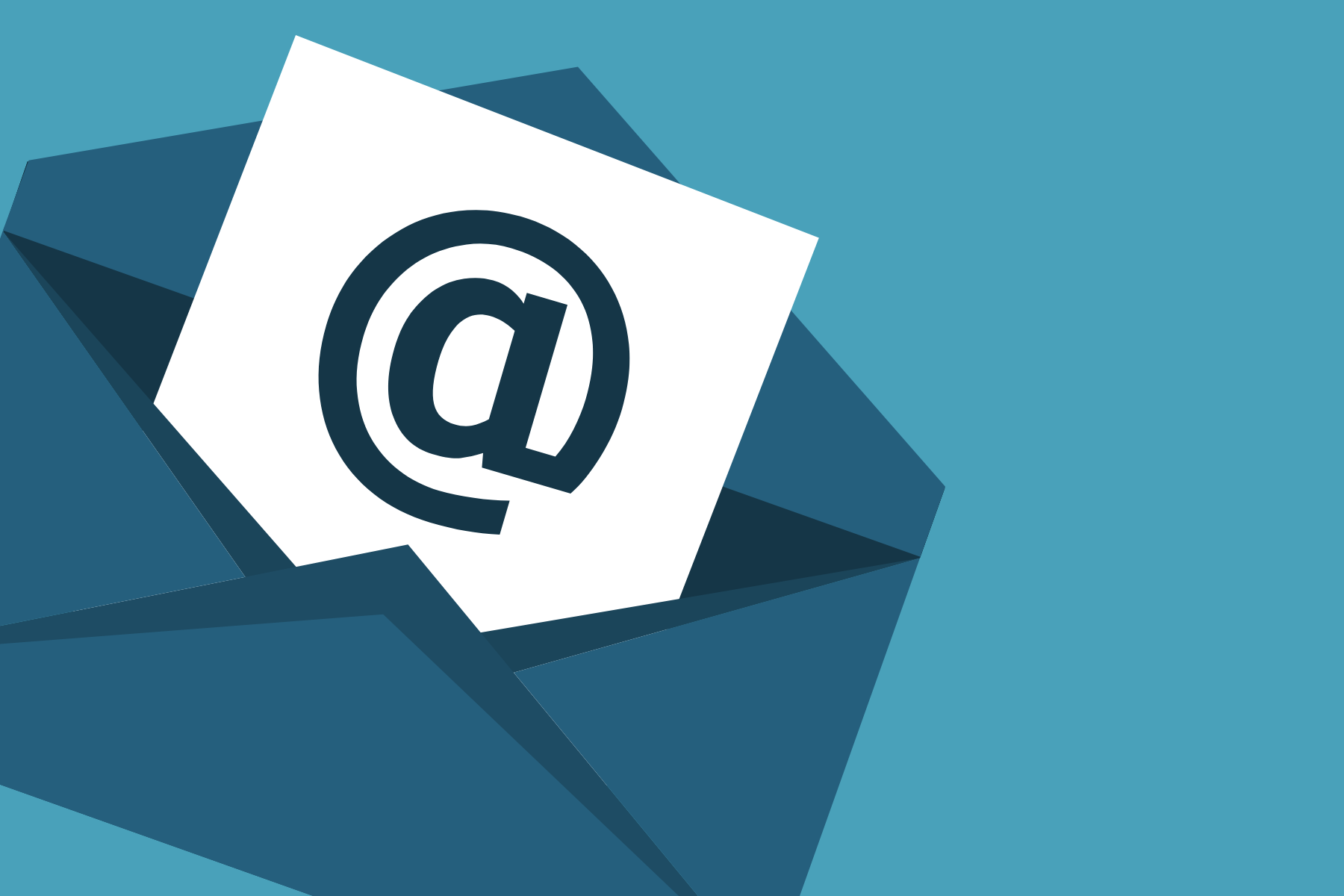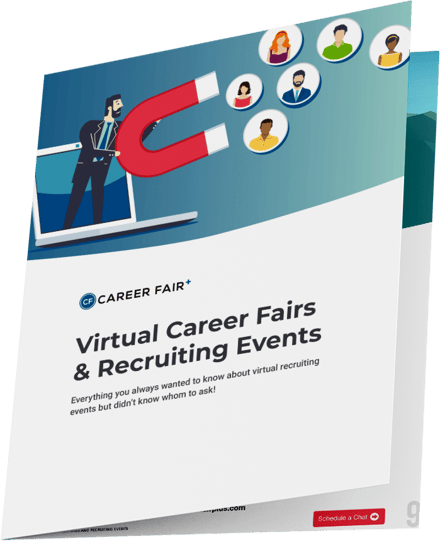
Predictable debates about the best ways to engage student job candidates are surfacing nationwide as the spring recruiting season winds down and ROI reports start circulating. I'm challenging the "email is best" assumption, not necessarily to prove it wrong, but to ensure that industry leaders do their best to attract student applicants.
Ever-present spam and phishing create skepticism about reading emails, something today's students are less likely to do in favor of social media. And if email isn't the most effective way to engage student job candidates, what are our other options?
Let’s open the conversation by discussing the challenges career services, and recruiters face trying to win students’ attention.
Why is getting student job candidates' attention so difficult?
Because students have busy academic and extracurricular schedules. Because there are too many irrelevant job postings to filter through. And because some people are better at keeping up with email than others.
Beyond these three issues, students might lack the industry knowledge to discern which opportunities align with their skills and interests. Or they might read job postings but not find suitable positions that offer personal growth, networking opportunities, and a healthy work-life balance.
Career services teams and employers must spotlight how open roles meet student priorities to spark their interest in posted jobs. Here’s why.
Why does proactive outreach to student job candidates matter?
The potential ROI of attracting student job candidates is undisputed. These newly minted professionals drive business growth with fresh perspectives and innovative ideas. Onboarding early-career talent can cultivate a strong workforce, foster loyalty, and increase long-term retention.
Initiating contact with this demographic helps companies stay competitive by maintaining a robust talent pipeline.
Finally, graduating students and young alums bring current skills and training, making them productive assets in ever-evolving markets.
However, simply recognizing the value of early talent doesn’t equate to overflowing application websites or HR inboxes. Why not?
Because students:
- Sometimes overlook opportunities for which they’re well-suited
- Could lack the confidence to start a conversation about a job post
- Focus on finding jobs with famous or elite brands to the exclusion of potentially better professional experiences
- Won’t necessarily re-engage during a job search even if they connect early in their university years
So, career services and employers ready to “initiate instead of wait” need successful outreach methods.
How effectively does email engage student job candidates?
A career services advisor recently shared a story with me about what they described as a perpetual problem. “When a student arrived for our advising session, I asked the student if they’d thought about the answers to the questions I emailed before our meeting. The student looked at me confused and replied, “Email? I don’t read emails. I have 14,000 unread emails in my inbox.”
Logic says there’s more than one reason for thousands of unread emails, one of which is the source. And according to my conversations with career services across the country, their students tend to dismiss correspondence from one industry-leading job search company because of overload. The recruiting software company sends too many emails for anything to grab the students’ attention.
Balancing volume is challenging. You don’t want students ignoring your emails; you do want them reading critical information. This is especially true as it relates to their job searches, keyword “their.”
Personalized emails cut through the noise, telling recipients why your email matters to them. Research shows 64% of Gen Z believe companies should provide personalized experiences. Other studies report personalization raises open rates by 26%, especially in the subject line.
You need to grab students' attention immediately with a relatable subject line that ideally includes their first name. A best practice for the body of your email is to send concise, engaging, and focused copy about the value your opportunity brings to the student. Highlight perks or unique aspects of the role.
However, considering the digital habits of today's students, relying solely on email probably isn't enough. In fact, it’s arguably better to take a multi-channel approach, mixing email into a broader, more diverse recruitment strategy to reach student job candidates effectively.
What advantages and disadvantages does email offer as a communication channel for attracting students?
Recruiters gain multiple advantages corresponding via email during a job search/interview process, including:
- Personalization: You can tailor emails to each candidate by addressing their unique skills and interests. Conveying they're valued increases the likelihood of a positive response.
- Flexibility: Students can read and reply to emails at their convenience, allowing for a less invasive approach than phone calls or instant messages.
- Detailed information: Emails can provide in-depth information about the job opportunity, including role requirements, company culture, and next steps, all in one accessible format.
On the flip side, communicating via email has its disadvantages, too:
- Overload: Your email can easily get lost in the sea of emails students usually receive daily or weekly, ending up lost or ignored in a cluttered inbox.
- Lack of immediacy: Unlike social media platforms or messaging apps, delayed responses are expected, which means missed opportunities might be, too.
- Limited engagement: Emails don't provide the same interactivity or visual appeal as other digital platforms, making it challenging to captivate students and showcase the most enticing aspects of a job.
Consider these pros and cons as you strategize your outreach efforts to effectively engage student job candidates.
If email isn't ideal, then what?
If students aren’t in their email programs, then career services and employers need to be where they hang out, literally or digitally. Instead of outreach emails, mix familiar and bold ways to connect. More importantly, employers and recruiters need career services staff to help them forge personal connections with job seekers. These teams know students individually and as unique audiences best suited for recruiters’ positions. Understanding these nuances facilitates productive student-employer interactions.
In-person programs like career fairs, workshops, and tabling events top the list of ideal meeting places for student job candidates and employers. Strong employer relationships matter here, too, since in-person recruiting varies by institution. Career services professionals are the local guides that company hiring managers need to find their ideal group of student job candidates.
Virtual reality (VR) experiences
Create immersive VR tours or simulations to showcase your work environment, projects, or training opportunities, giving students a unique, interactive glimpse into your company.
Hackathons or skill-based competitions
Organize events that challenge students to solve real-world problems, allowing them to showcase their talents while engaging with your company.
Campus pop-up events
Set up surprise pop-up booths or interactive installations on campus, sparking curiosity and generating buzz around your brand.
Collaborative projects
Partner with professors to integrate company-related assignments or projects into their curriculum, providing hands-on experience and introducing your organization in an academic setting.
Day in the Life" video series
Produce engaging videos in which employees document their daily work lives, offering students relatable and authentic insights into your company culture.
Collaborate
Team up with schools to offer scholarships, internships, or work-study programs. Supporting students' educational goals means you value their academic accomplishments and build a positive brand image. Generate a sense of reliability and trust--collaborate with campus influencers or clubs to promote your company and job openings.
Interactive welcomes
Introduce your company and roles during free, interactive webinars or virtual workshops on industry topics. Welcome students into your industry and organization by building their confidence in your market sector.
Play games–for real!
Integrate gamification into your recruitment process. It's contemporary, fun, and memorable--all messages you want to give candidates about your company.
Social proof
Share authentic written or video employee testimonials about your company's work environment and career growth opportunities.
How can recruiters leverage social media, career fairs, or campus events to engage with potential student candidates?
Here are five bold and innovative ways recruiters can use social media, job fairs, or campus events to engage with potential student candidates.
Social media challenges
According to Morning Consult's survey, Gen Z spends 88% of its time on YouTube, 76% on Instagram, and 68% on TikTok. And while this survey didn’t include LinkedIn, 18-24-year-olds are 20.4% of LinkedIn users, the second most popular age group after the 25-35 demographic. So consider out-of-the-box ways to meet early career candidates in their social media spaces.
Launch a fun, skill-based challenge on LinkedIn, YouTube, and Instagram, encouraging students to showcase their abilities while engaging with your company's brand. Offer exciting prizes or maybe paid internships to the winners. Or, career services and employers can add visual media (e.g., photos, videos, gifs) and custom URLs to social media posts to better attract student job searchers.
Finally, showcase alum testimonials, student success stories, and realistic career paths by industry or even employer departments. Career services and partner employers can team up to showcase school alum statistics in general and by employer.
Interactive job fair booths
Set up a unique, interactive booth at job fairs featuring immersive experiences like VR, trivia games, or creative contests related to your industry. You'll generate buzz and make your company memorable.
Collaborative campus scavenger hunts
Partner with campus clubs or organizations to host a scavenger hunt with clues about your company's mission, values, or job opportunities. Reward participants with swag, networking opportunities, or interviews.
Social media takeovers
Invite current interns or recent graduate hires to "take over" your company's social media accounts for a day, sharing their experiences and providing an authentic look into the life of a young professional at your organization.
Email or no email, what are the key takeaways for a productive student outreach strategy?
Understand their world
Get to know students' interests, concerns, and preferred platforms to communicate more effectively and establish a genuine connection. How? With strong career services-employer relationships. Every college and university approaches recruiting differently; the career services team personalizes outreach for their campus and students.
Showcase what they’re searching for
Highlight your organization's mission, culture, and commitment to employee growth, emphasizing aspects that resonate with students.
Be authentic
Promote real stories and testimonials from employees to create trust and showcase the authentic experience of working at your company.
Invite learning
Provide opportunities for students to develop skills and expand their networks, like internships, workshops, or mentorship programs.
Mix things up
Combine traditional methods, like emails and job fairs, with innovative tactics, such as social media challenges or VR experiences, to reach a wider audience.
Track and adjust
Continuously monitor the effectiveness of your outreach efforts, gather feedback, and refine your strategy to optimize results and better connect with student job candidates. Implementing these key takeaways will help you create a more effective and engaging student outreach strategy and attract top talent to your organization.
By understanding students' preferences and evolving your outreach methods accordingly, you'll be better positioned to attract and connect with top talent. Email alone doesn't cut it these days. Students are on different platforms, and we must meet them where they are. A mixed approach offers benefits like reaching a wider audience, creating memorable impressions, and showing that your company is in tune with the latest trends. For instance, combining email with social media or interactive events can create an unforgettable brand presence and foster genuine connections with students. Keeping things fresh and adaptable in the recruitment game is essential. So let's keep it simple and focus on making meaningful connections with the next generation of professionals.
